Yemen
Things to DO
Sana'a
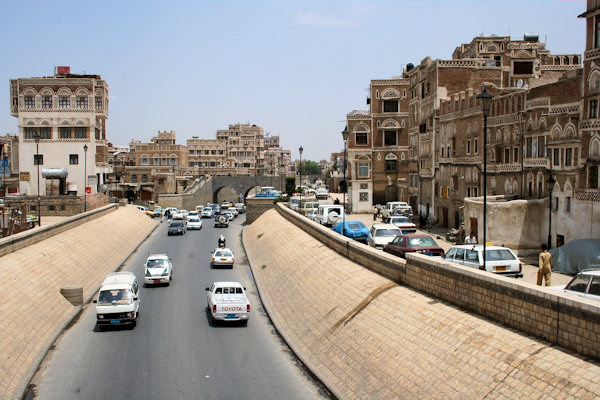 |
|||||
In 1984 old Sana'a in its entirety was declared a Unesco World Heritage Site.
The town is so perfectly preserved that it is said you can walk a square kilometre in any direction without encountering a single new
building.
The old city is particularly famous fot its Tower Houses. Reaching up to six- or eight-storeys, the have been caled The world's
first skyscrapers; San'a contains no less than 14.000 of them.
Tower houses tend to follow a set design; on the ground floor are the stables and storerooms; on the 1st floor the rooms used for
entertaining; the 2nd floor is usually reserved for the women and children; and on the 3rd and 4th floors are the bedrooms, bathrooms
and kitchen. At the very top of the house is the "Manzar" (attic), wich contains the famous "mafraj" (literally 'room
with a view') Serving often as windows in the mafraj, are moon-shaped, stained-glass windows known as "qamariyas".
Today much qat-chewing, gossiping and deal-doing takes place here.
Hidden behind the tall mud walls of some houses are gardens and orchards. The city used to be entirely self-sufficient in fruit and
vedgetables, and the gardens are actively cultivated to this day
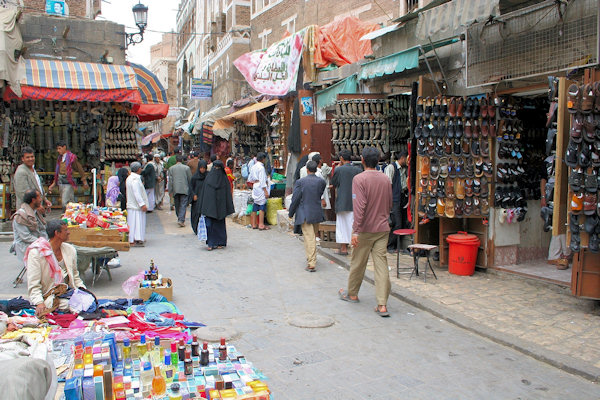 |
|||||
According to legend, Sana'a was the "City of Shem" that is mentioned in the Bibble and was built by Noah's son. It may also
have been the town of "Azal" described in the Old testament.
Whatever its exact origins, Sana'a is undoubtedly one of the most ancient towns on the Arabian Peninsula. Inhabited during Sabaean times,
it later became the capital of the great Himyarite dynasty in the early 6th century AD.
It also served as a power base for two foreign powers: the Abyssinians and Persians. In the 7th century AD Islam arrived, altering
forever the face of the city, as early mosques and minarets rose up to replace the old churches.
After the civil war in the 1960's, Sana'a experienced a period of rapid growth, doubling in size every four years.
Historically, politically and economically, it was the obvious choise for the capital of the reunited Yemen in 1990.
Ma'rib
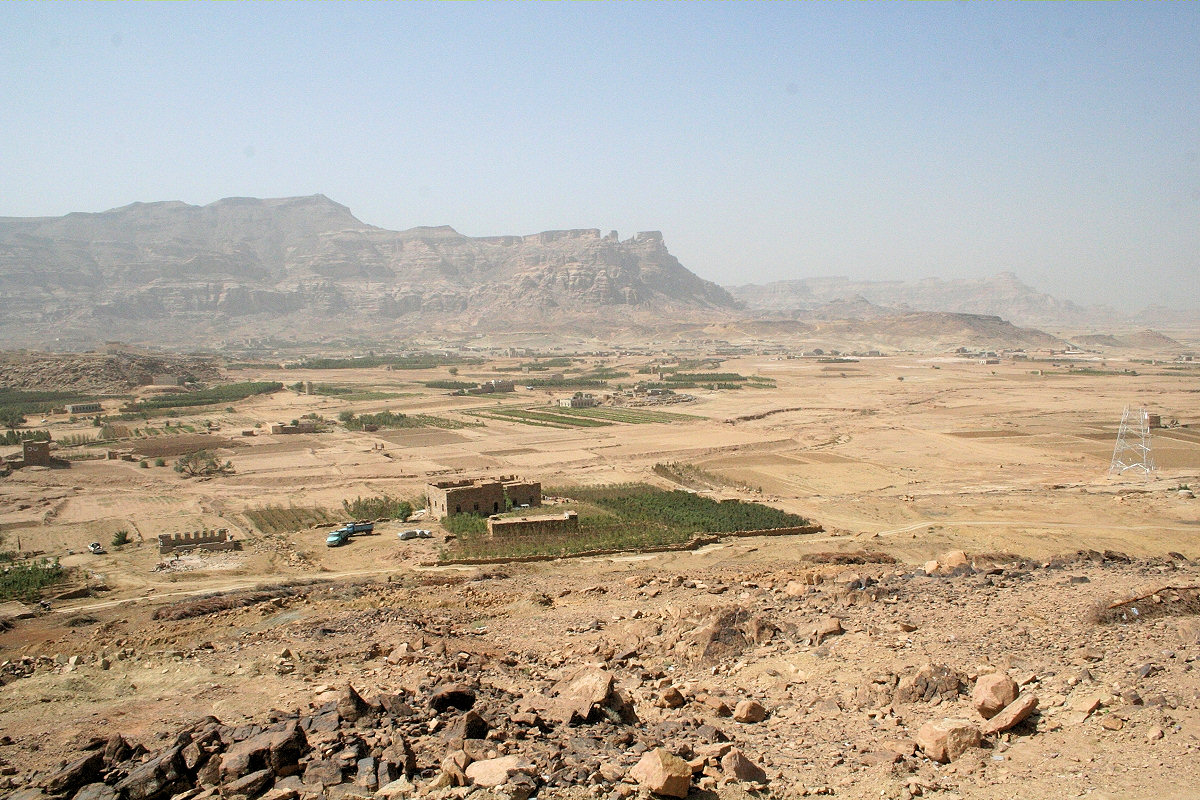 |
|||||
The road running east from Sana'a leads to increasingly desolate landscapes, culminating in the famous Ruba al-Khali
(Emty Quarter)
Although bare, bleak and sometimes monotonous, the scenery is relieved by the occasional acacia (sourse of the heavenly honey),
Bedouin tribespeople armed to the teeth and nervous policemen manning checkpoints that bristle with fortification.
Women wearing the shapeless black gown known as the abayaa, petroleum trucks rattle past (this is after all Yemen's oil region)
and little cities in the sand - the honey-couloured, mud-brick blocks of traditional Yemeni architecture - fly by.
Scattered about and sprouting up against all odds are green and glossy bushes; even here qat finds a home.
Qat
Life for most Yemeni men revolves around the stimulant qat. Chewing qat is an important social activity and the men can easily spend four
hours every afternoon doing little more than chewing.
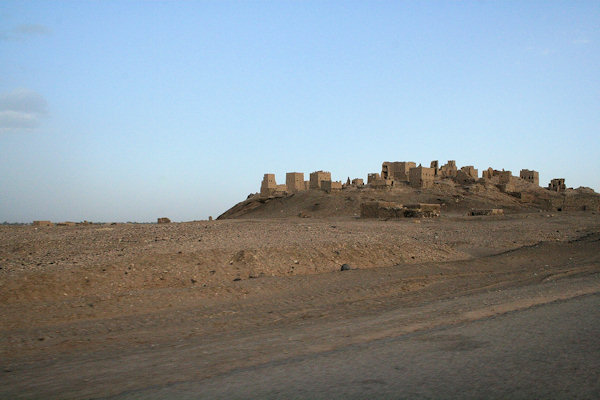 |
|||||
Ma'rib is Yemens most ancient city. The former capital of the powerful Sabaean Empire, it makes up part of the largest
archaeological site in the southern part of the Arabian Peninsula and has been called the regio's "cradle of civilisation".
Inscriptions indicate that the city dates from at least the 8th century BC, though it may have been founded even earlier.
Rising like a spectre from the surrounding landscape is the eerie silhouette of Old Ma'rib. Originally built before the
1st millennium BC, it suffered much damage from bombs during the 1962 civil war, but is still well worth a stroll.
Note that because of the tribal tension currently in the area, tourists are given a compulsory police escort while travelling to, around
and in the town of Ma'rib. After sunset a curfew comes into force: you're obliged to remain in your hotel until sunrise.
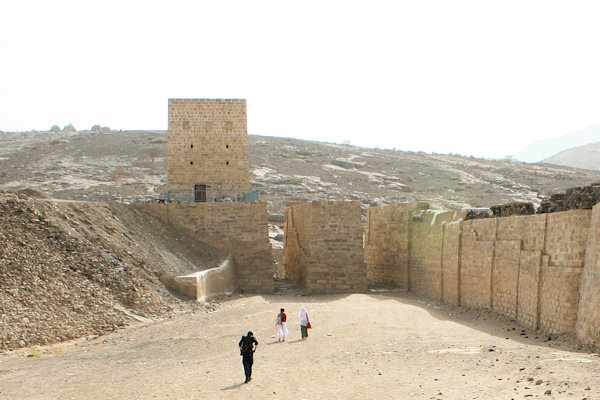 |
|||||
Great Ma'rib Dam is believed to date at least the 8th century BC. It was periodically repaired; the last recorded time that major
works were carried out was in the 6th century AD, after which it probably fell into disuse. Only two sluicegates (look out for the Sabean
inscriptions) remain.
The New Dam was built in 1986 by the current president of the United Arab Emirates, Sheikh Zayed bin Sultan an-Nahyan.
Three times smaller than the Great Dam, it certainly throws the engineering feat of the later in perspective.
Mahram Bilqis (Temple of Bilqis) is believed to date at least 800 BC and was dedicated to the "Sun God".
Measuring 94m by 82m, it is the laegest of all the Sabean temples. Remains are a 9m-high wall, a hall with columns and a row of eight
12m-high columns. Sadly the temple (which was only partly excavated in 1952) requires much archaeological work.
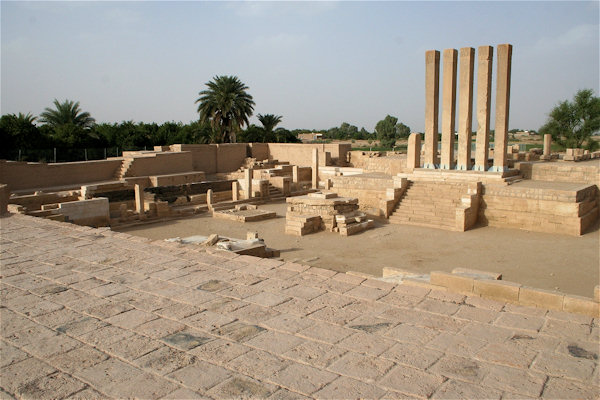 |
|||||
The ancient Arsh Bilqis ("Temple of the Moon") is the site of the famous five-and-a half- collumns often seen in tourist
brochure.
Although linked to the legend of the Queen of Sheba, archaeologists now believe that the temple predates the queen and is actually
around 4.000 years old. It is thought to have been built arround 2.000 BC, and to have been dedicated to the moon.
The temple consists of a square with an open courtyard, at the centre of wich lies the old sacred well. Twelf steps lead from the open area
to the hall, and there's a row of fixed marble seats on the western side and a plinth on wich a 6m statue of the Sabaen holy Oxen once stood.
The Australian traveller and scholar Edward Glaser was the first to record and read a short Middle Sabaic inscription engraved on
one of its pillars, mentioning the god Almaqah of Barlan.
Almaqah was the patron god of the Sabaeans.
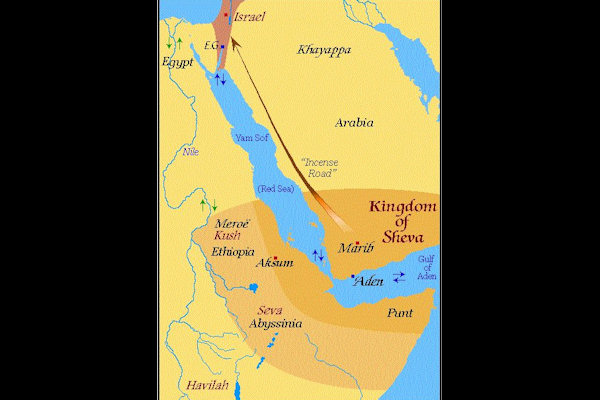 |
|||||
Queen of Sheba
The story of the Queen of Sheba appears in religious texts sacred to Jews, Christians, and Muslims.
In these tales the Queen of Sheba is a seeker of truth and wisdom and she has heard that King Solomon of Israel is a very wise man.
She travels on camel to Jerusalem to meet him and test his knowledge with questions and riddles. With her she brings frankincense, myrrh,
gold and precious jewels.
King Solomon has heard of Sheba and her great kingdom. He has also heard that she has a strange feature, a left foot that is cloven like
that of a goat and a hairy leg. Eager to see if the story is true, he has the floor of his court polished until it is like glass. When the
Queen of Sheba walks across the floor, Solomon sees the reflection of her cloven foot. Right in front of his eyes, it transforms and becomes
normal.
The Queen of Sheba tests Solomon's wisdom, asking him many questions and giving him riddles to solve. He answers to her satisfaction and
then he teaches her about his god Yahweh and she becomes a follower.
Sayun
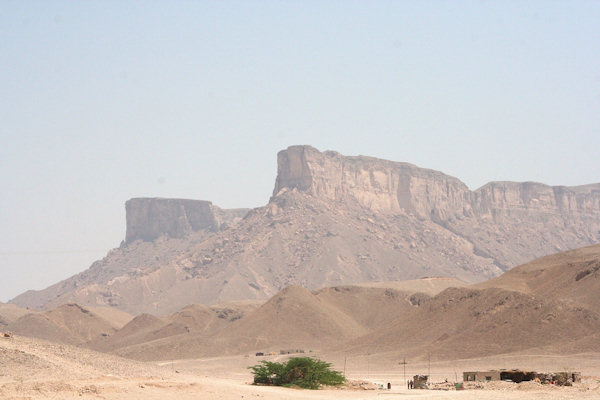 |
|||||
A great journey form Marib to Sayun is across the impressive Ramlat as-Sab'atayn desert. You'll need a Bedouin guide to accompany
you (and you should tip him afterwards).
Streaming for hours across the desert in the wind, sun and sand, you'll soon get an idea of how vast the desert really is.
Sayun is the largest town in the Hadramawt valley and was capital of the Northn Hadramawt Protectorate during the final years
of British rule.
This town, an age-old marketplace is on a major caravan route. Its economy was greatly boosted in 1490 AD when some
10.000 members of a North Yemeni tribe, the Kathirs of Hamdanis, immigrated to the town and make it their capital, ruling it until
the 1967 revolution.
Near the cemetery you can find the Tomb of Habashi (dating from 1910) and the 16th-century Al-Haddad Mosque (unfortunatly
non-muslims are forbidden to enter the side of the tomb as well as the graveyards)
Also worth a wander are the alleyways of the old souq.
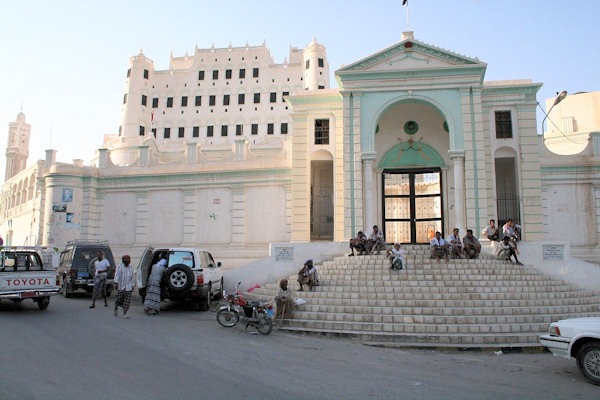 |
|||||
The Sultan's Palace in Sayun is perhaps the most pompous of all South Yemeni palaces, a multistorey, white-plastered colossus
with light-blue window decorations.
It stands on an elevation next to the town's central souq.
The present shape of the building stems from the 1920s and 1930s when the Kathiri sultan Mansur bin Galbi and his son Ali rebuilt
the earlier palace. The mud-brick wall around the palace is from 1987 when the building was last renovated.
The palace is now most empty, having been converted into a museum after the 1967 revolotion.
The museum occupies several halls and rooms
on various floors but leaves plenty of space unused.
On the top floor you will find various departments dedicated to folklore, such as
handcraft, marriage and birth, coffee and tea costums and Arabic medicine.
Don't leave without a visit to the roof of the palace; there are great views across the town.
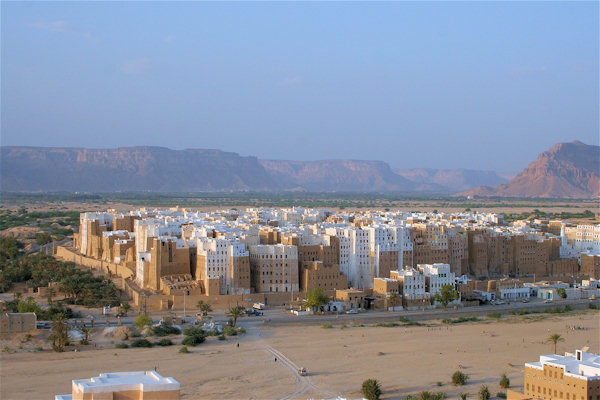 |
|||||
Shibam, around 19km west of Sayun, is a very old city. It was already the capital of the Hadramawt area in the 3rd century
AD, and served as the capital several times until the 16th century.
Today it has a population of around 7.000.
Sibam with its extremeley compact layout, is a remarkable example of ancient town planning.
It has a earth wall and the houses are built with mud bricks and wooden superstructures on stone foundations.
Most of the houses have four
to seven storeys, depending on the height of the elevation on which they stand, so that the roofs of the buildings are all the same
level.
Look out for the old decorative doors and windows.
Worth a peek also are the citty Walls, witch date from the 17th century, the Sultan's Palace built in AD 1220, and the various
mosques, including the Sheikh ar-Rashid Mosque wich dates from the 10th century.
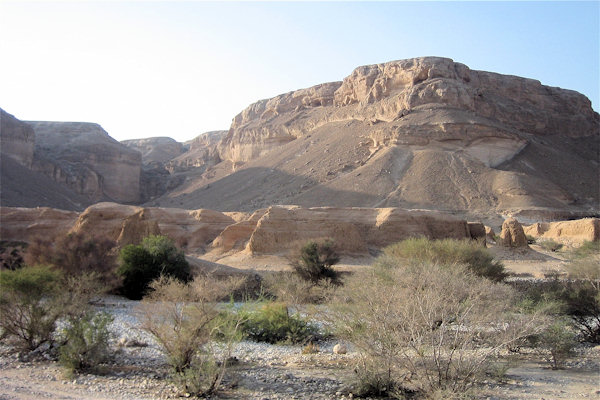 |
|||||
Measuring over 165 km long (and between 700 m to 12 km wide) Wadi Hadramawt is the longest wadi in the Arabian Peninsula. It's
also one of the most fertile and is intensely cultivated.
When travelling through the wadi, you'll suddenly come across - oasis-like - verdant plantations of date palms, bananas, lemons and papayas,
as well as crops of tobacco, henna and a variety of cereals.
Named after the people who made their home here, the wadi is mentioned in both the Bible and the Quran. The holy books made reference
to the quality of its incense as well as the fertility of its land. The drainage system of the wadi is also ancient and sophisticated.
Keep an eye out for the Hadramawt herders in their tall, "witch's hats" (know as madhalla)
Wadi Daw'an is one of the most attractive of the many "branch wadis" off Wadi Hadramawt. One of the most attractive of the
wadi's villages is Sif, where houses are painted in pastel colours and sometimes decorated with flowers.